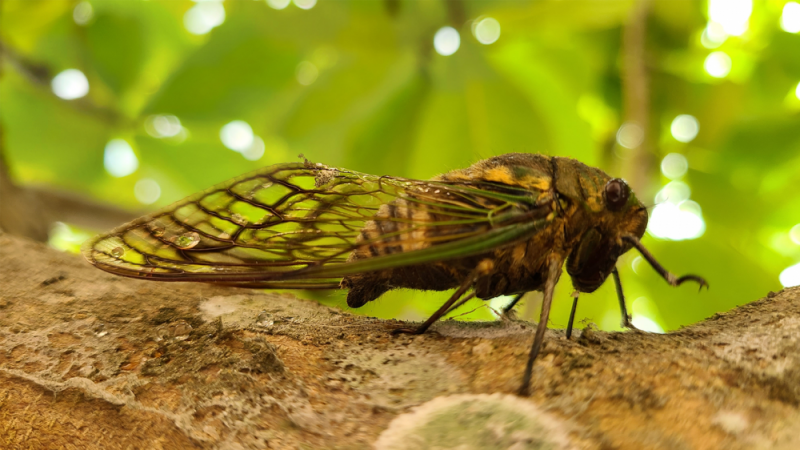Cicadas pee in jet streams like bigger animals

Cicadas are known for emerging in the billions. These groups chatter so loudly that fiber optic cables can pick up the noise. However, the way that they pee is also making waves this year. Instead of urinating in tiny droplets that they flick from their butts like other insects and small organisms, cicadas pee in high speed jets more similar to large mammals. This unique urinary habit is detailed in a study published March 11 in the journal Proceedings of the National Academy of Sciences (PNAS).
While the insects are a loud bunch, cicadas are not always so easily spotted among the trees. During a research trp in Peru, a team of scientists got lucky and found multiple cicadas peeing in the trees. From this encounter, the team was able to disprove two main beliefs about insect urination.
Droplets vs. jets
The insects that generally eat xylem sap from trees and pee in droplets since it uses less energy to excrete the sap. However, cicadas eat so much sap that individually flicking away each drop would be too taxing. Using this much energy to toss away pee droplets would mean that they needed to eat even more tree sap.
“Peeing in jets allows cicadas to generate a large volume of liquid excretion,” study co-author and bioengineer/biophysicist Elio Challita tells PopSci. “This is critical because these insects must ingest a substantial amount of xylem-sap daily. So they need to excrete large volumes as well.” Challita completed his work on this study while working with Georgia Tech’s Bhamla Lab and is currently a postdoctoral research fellow at Harvard University.
[Related: Watch these tiny bugs catapult urine with their butts.]
Saving energy
Smaller animals are also expected to urinate this way since their orifice is considered too small to release anything thicker than a droplet. Cicadas are on the larger size for insects and can have a wingspan close to that of some hummingbirds. For the cicadas, it appears aht urinating in jets uses less energy than tossing away the pee droplets. Scientists previously believed that if a small animal like an insect wants to eject jets of liquid, it is challenging for them since it would require energy to force the fluid out at a high speed and their bodies are not big enough. Larger animals can use gravity and inertia to help them urinate while saving energy. The team believes that the energy savings and the cicada’s larger size enable them to pee more like a big animal.
“The biggest surprise was discovering that cicadas can pee in jets, despite being small insects with energetic constraints due to their nutrient-deficient diet,” says Challita. “This goes against the conventional wisdom that small animals, especially those under one kilogram [2.2. pounds], cannot pee in jets.”
‘Expect a lot of peeing’
Studying how the cicadas urinate offers new understanding of fluid dynamics in everything from insects up to large mammals including elephants. According to Challita and the team, studying all of the different ways that animals excrete liquid has potential applications in other areas including soft robotics, additive manufacturing, and drug delivery systems. Since cicadas are now the smallest known animals to create high-speed jets, they could inform how to make jets in small robots or nozzles.
Beginning in April two broods of cicadas–one in the Midwestern United States and one in the South–will emerge simultaneously. There is a small overlap area in Illinois and these broods only emerge at the same time once every 221 years. Ahead of the “dual emergence” it’s not currently known what kind of impact their urination will have on the ecosystem. But it could be big.
“Cicadas will be emerging in the billions this year, so expect a lot of peeing! More importantly, we don’t understand the ecological implications for the surrounding flora and fauna,” says Challita.”
[Related: Scientists finally discover the enzyme that makes pee yellow.]
The research also highlights why it’s important to study some of the more mundane and everyday aspects of animal biology.
“By investigating these processes, we can uncover fascinating adaptations and gain insights into how animals interact with their environment,” says Challita. “It’s also a reminder that there’s still so much to discover about the natural world, even in the most unexpected places, like cicada pee!”










